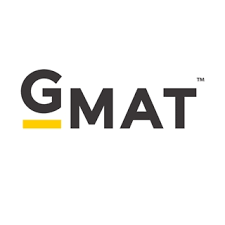Using a GMAT Study Guide
The first step towards being able to prepare for your GMAT exam schedule is to plan ahead. You must have a clear idea of what questions will be on the exam, when they will be asked, and what sort of answers you should expect to get from them. This should be done well in advance so you will be able to time your studying properly. Plus, you will be able to eliminate the factors that will cause you to study less.
Next, you will need to figure out exactly what you will be doing when you take the GMAT. Will you be doing hands-on practice questions during the course of the semester? Or will you instead be relying on guides that will show you exactly where to place your bets when you are not actually answering questions? Whatever you decide to do, you need to have a clear and concise description of what will be happening while you are taking the exam. This includes both your movements and your actions within the classroom.
Once you know what kind of preparation you will be doing, you can begin to decide where you will actually take the GMAT examination. This can be done as early as the summer before your matriculation class. If there is still time left over, you can make sure you get at least one GMAT study guide and devote some time to trying to get the best possible scores on the test. Of course, you should not try to schedule an exam on or around the day you plan to take it, as this could be very dangerous.
For most students, the best way to study and learn the material for GMAT is to take the exam just like a typical examination, but to do so at a time when you will not be experiencing much stress. Of course, the best time to take the exam is when there is not a lot of pressure. However, some students will find that the GMAT schedule may prohibit them from taking the exam on the days when they feel extremely anxious about it. So in addition to scheduling your exam around the days when you will not be experiencing a lot of pressure, you will also need to consider the effects that different times of day will have on your concentration. Try to take the exam in the morning, after lunch, or about 2 hours before you will usually end your day.
Once you have figured out the best times to study for the exam, it is time to start looking at the various kinds of study guides that are available for the GMAT. Some exam schedules will allow you to review the sections that you are likely to have to focus on, while others may require more study time. Look for a guide that will help you to allocate the right amount of time based on how long it will take you to complete each section of the exam.
In addition to using a study guide that helps you study for the GMAT, you will also need to make sure that you eat a nutritious diet. This is especially true if you are taking the exam immediately following a very busy and hectic work schedule. Your diet must contain foods that will boost your energy levels as well as provide you with the nutrients that you will need to get through the day. You should also make sure that you get plenty of sleep each night, as your health is very closely connected to how well you think. When you go to bed each night, make sure that you read at least one book. If you can find a quiet, warm place where you can study effectively, you will find that the time spent in front of the GMAT test prep software will be more effective than trying to cram for the exam in your home.
If you are serious about getting into the business field that you want, then the GMAT exam schedule that you choose will be crucial to your success. If you take the exam without giving any thought to how you will study, then you will find that you cannot properly prepare for the exam. The GMAT schedule will give you a set amount of time to complete the required number of questions, so make sure that you take the time to check it out thoroughly. Otherwise, you could find yourself wasting valuable time and failing the test before you even take it! There are many different ways to approach studying for the GMAT, and each way has its pros and cons.
